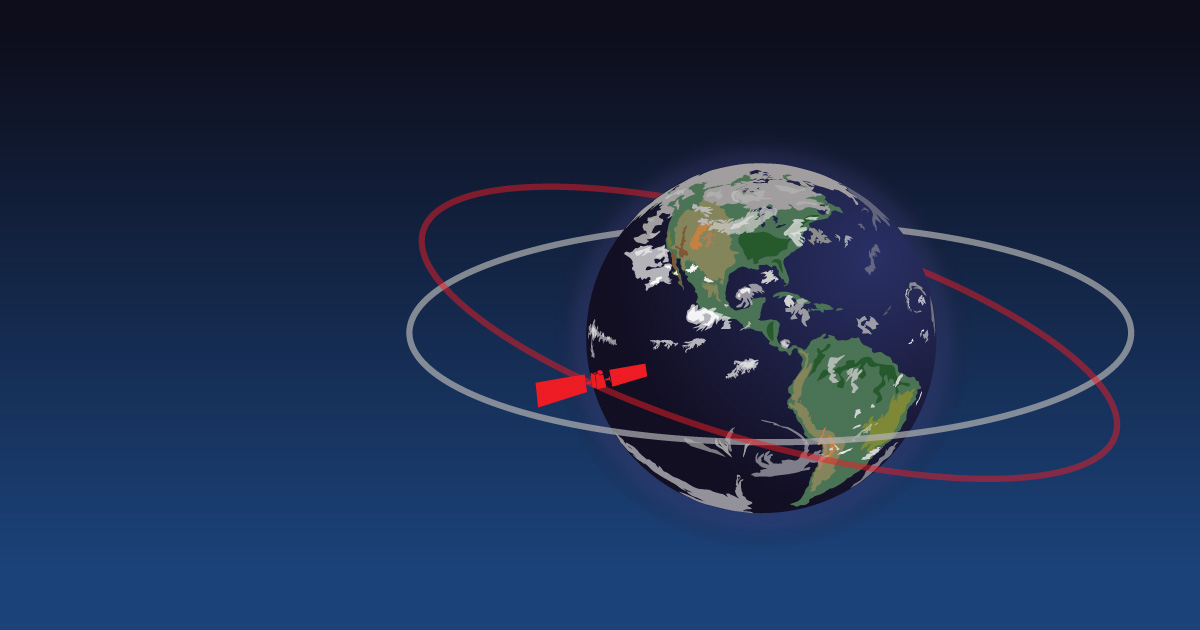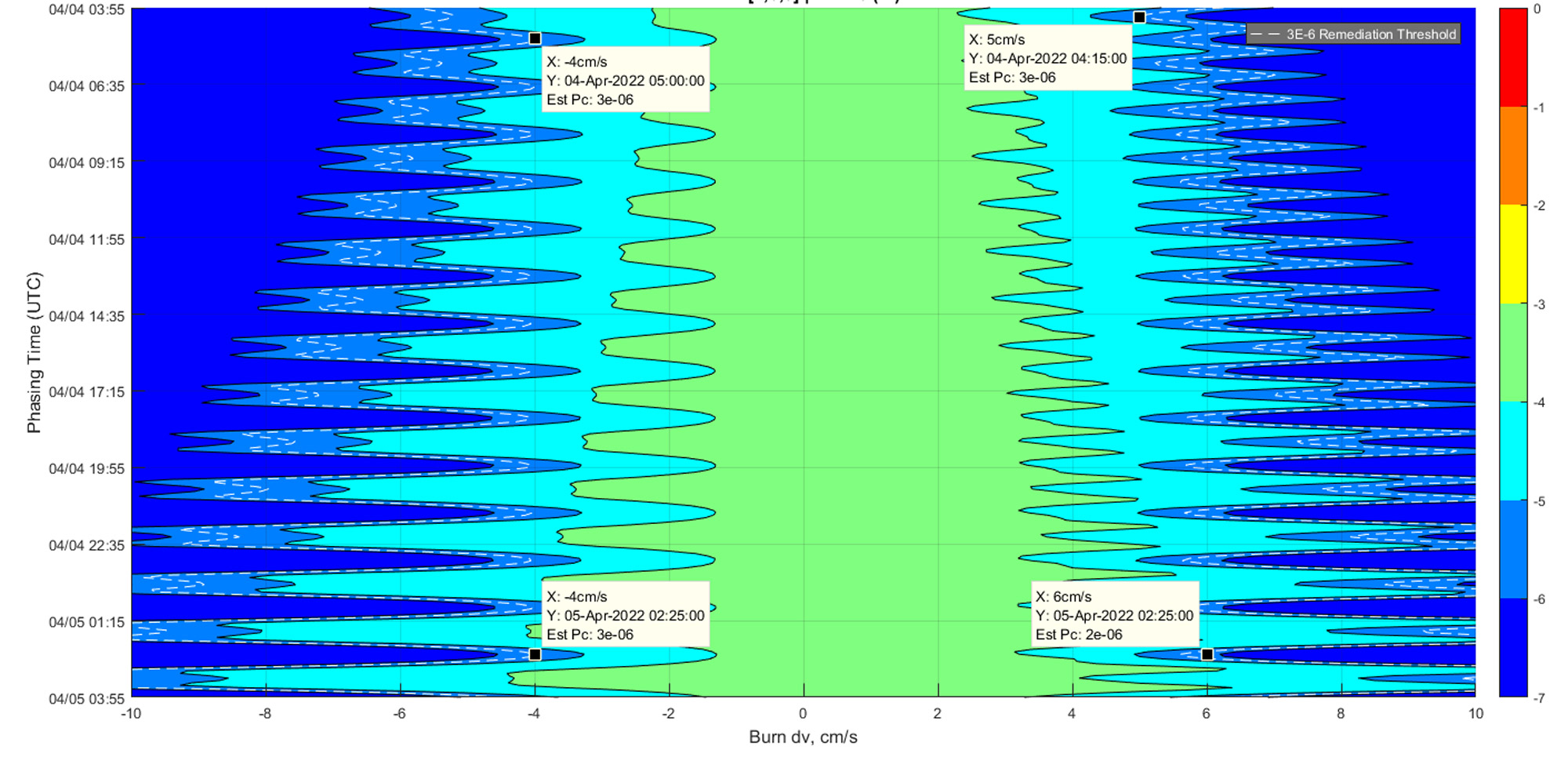For close approaches that manifest a high level of collision risk and thus can be expected to require mitigation, mitigation planning begins about three days prior to the time of closest approach (TCA). Planning at this point includes beginning to discuss mitigation options. The great majority of protected assets have active propulsion systems and thus will mitigate high-risk conjunctions with a propulsive maneuver to change their trajectory so as to avoid the secondary object. A smaller subset of missions perform trajectory modification through a process called differential drag, in which they reorient their satellite in order to change the frontal area in the velocity direction and thus the atmospheric drag and, by extension, the satellite trajectory. An even smaller subset, which lacks any trajectory modification capability, can still reduce collision risk by reorienting their satellite so that its minimum projected area is facing the direction of the oncoming secondary object.
For missions that mitigate through propulsive maneuvers, a maneuver trade-space plot is constructed that gives a high-level laydown of the propulsive mitigation possibilities; an example of such a plot is given below. The x-axis is the burn intensity, the y-axis is the time of burn, and the color is the Pc of the conjunction as mitigated by the maneuver. From such a plot, one can determine to what Pc level one wishes to mitigate the conjunction as well as the combination of burn size and time that will achieve this level of mitigation. One can see that maneuvering earlier (higher up on the y-axis) can allow a given degree of mitigation with a smaller burn size, and this is one of the interesting tensions of conjunction mitigation: mitigating can be accomplished with less fuel if done early; but because many events drop off in risk level as TCA is approached and uncertainty decreases, waiting to mitigate can often eliminate the need to mitigate altogether. For reference, the NASA requirement for conjunction mitigation is to reduce the Pc one and one-half orders of magnitude below the mitigation requirement of 1E-04, or approximately 3E-06.
Based on a plot like the above, missions choose a maneuver that provides the needed mitigation and also aligns with their own fuel budgets and timeline constraints. They then build an ephemeris that contains this maneuver and submit that ephemeris for screening against the catalogue. If the ephemeris clears a screening interrogation without generating additional high-risk events, then the maneuver can be safely executed. At the maneuver commitment point, which is typically 1 to 0.5 days to TCA, a final examination of the conjunction risk is made and a decision taken regarding whether to mitigate. Many events drop off in risk after planning begins but before the maneuver commitment point, allowing the mitigation action to be dispensed.




























